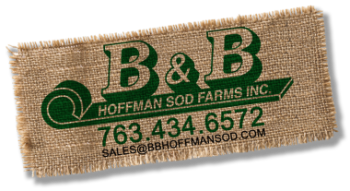Many homeowners think October is too late in the season to spend extra time on their lawn, but this is a myth! In preparing for a long, dormant winter, your grass is busy absorbing energy, moisture, and nutrients. Fall is ideal for giving your lawn some TLC to ensure a lush a beautiful lawn come spring.
As you continue to cut and water your lawn this season, drop the blade on your mower to its lowest setting as the season comes to a close. This modification allows more sunlight to reach the grass and less to turn brown over the winter.
Applying fertilizer in the fall provides essential nutrients for grass to grow deep roots and stay healthy until the last snow melts. Using a drop spreader for application provides an even and consistent layer of fertilizer.
If you’ve been waiting to lay sod, now is the time to do so. Cool temperatures and regular rainfall allows sod to retain moisture and root quickly.
And don’t forget to water! Until the ground is frozen plants and grass still need regular watering to stay healthy.
Purchase sod and winterizing fertilizer from B&B Hoffman Sod Farms in Elk River. To learn more about us and products we offer, visit us online or call 763-434-6572.
